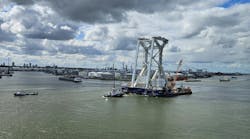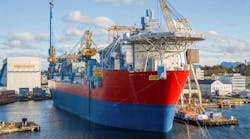Garth Gregory, BJ Services Co.
Since last year, there has been a major shift in the stimulation vessel market. All of the companies that own vessels have aging fleets that need replacing, and new markets demand different capabilities that place newbuilds/modifications high on the agenda.
Oil companies are demanding DP-2 capabilities, larger capacities, and newer hulls. These demands combined with the current shortage of newer vessels have resulted in the charter rate for vessels nearly doubling in just 12 months. Most major vessel builders are building a large number of vessels that will be ready later in the year to handle this surge in the market.
A shift in global demand is behind BJ Services’ repositioning its North Sea and Gulf of Mexico assets. India’s surge in activity and lack of sufficient DP-2 vessels has resulted in BJ sending one vessel from the North Sea and another from the Gulf of Mexico to work for two different customers there. The company expects active tenders in Latin America to result in an increased vessel count there this year as well.
From Nigeria to Angola, West Africa has been active and will only become more so in the next couple of years. The Middle East, particularly the Persian Gulf, will need one or two more vessels by next year. Vessels currently active in this area have to provide pumping capability for large volumes of acid, a capability that most current vessels do not have. Needless to say, equipment layout/design is very important for the newbuilds because they also will need to have proppant capability to operate most other places in the world.
The North Sea, despite an increase in activity this year, will remain a two-vessel market. The vessels working in the North Sea today are all over 20 years old and will be due for replacement soon, as demanded by operators.
The US/Mexico GoM has the largest concentration of vessels in the world. Each service company operates at least two vessels in the region. With a certain shift to deeper water in the next couple of years, service companies may be reviewing their assets in the Gulf to design for bigger, larger-capacity vessels than are currently servicing the market.
Overall, the market for vessels over the last 12 months has been very exciting. Markets are moving further offshore and further from existing facilities; so transit time and ability to stay on location longer become significant issues. There is a need for larger capacities and better station-holding capabilities to enable the vessels to stay out longer without restocking, and there is also a need for vessels that can work in more inclement weather.




